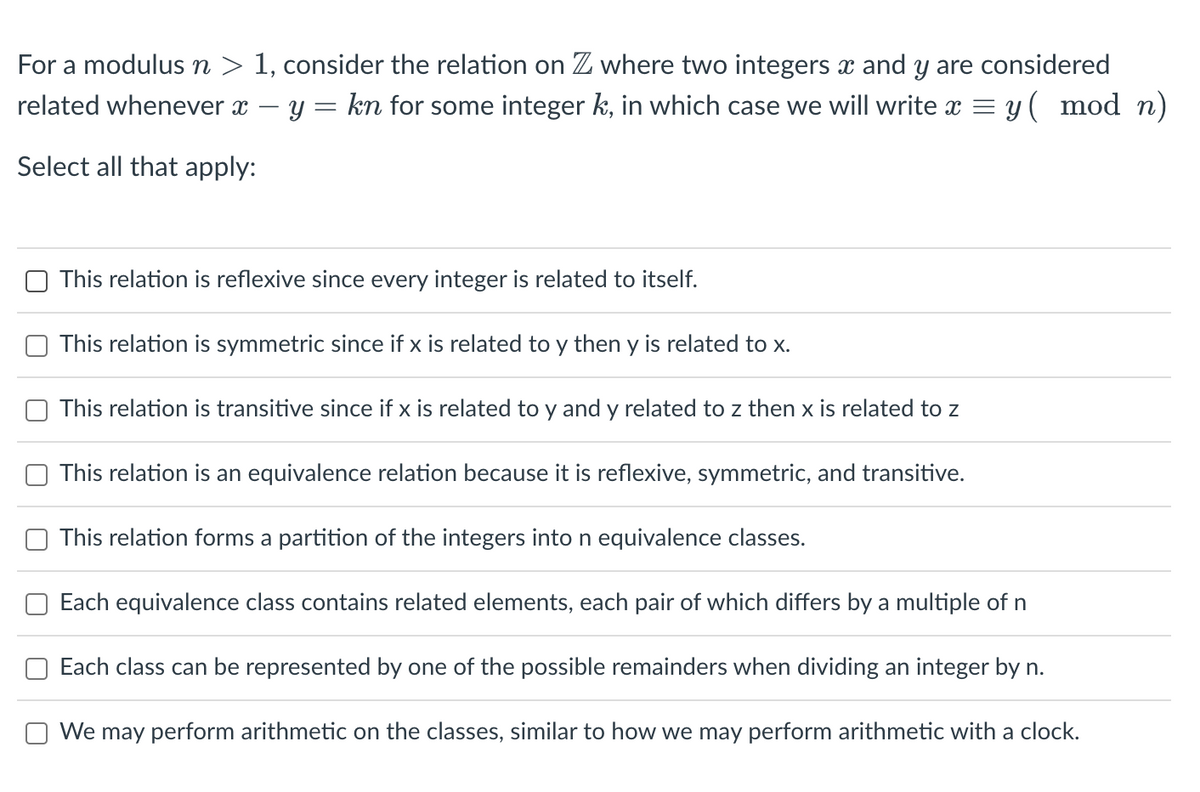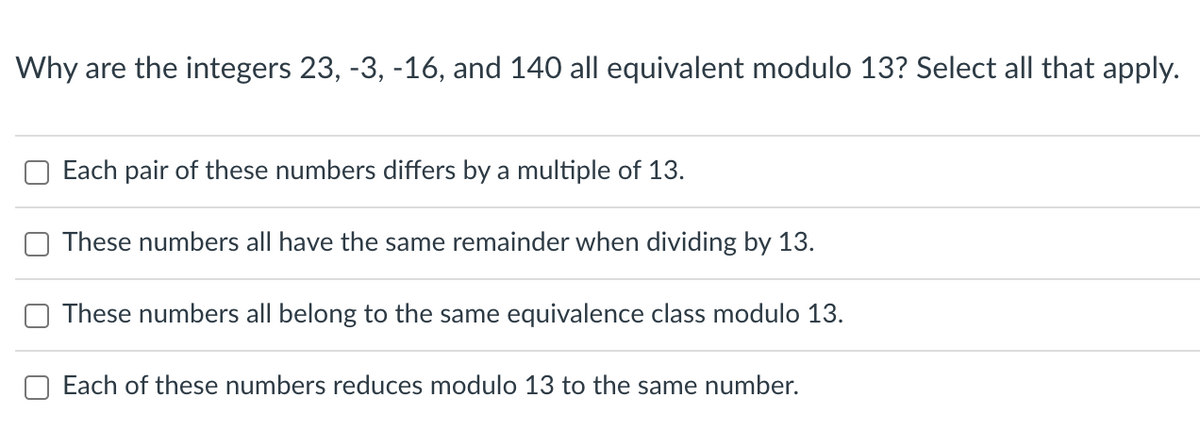Separately, put each of 23, -3, -16, and 140 into your calculator. Then, add or subtract 13 repeatedly until you reach the smallest possible positive result. In each case, what is that number?
Separately, put each of 23, -3, -16, and 140 into your calculator. Then, add or subtract 13 repeatedly until you reach the smallest possible positive result. In each case, what is that number?
Algebra: Structure And Method, Book 1
(REV)00th Edition
ISBN:9780395977224
Author:Richard G. Brown, Mary P. Dolciani, Robert H. Sorgenfrey, William L. Cole
Publisher:Richard G. Brown, Mary P. Dolciani, Robert H. Sorgenfrey, William L. Cole
Chapter11: Rational And Irrational Numbers
Section11.8: Adding And Subtracting Radicals
Problem 5E
Related questions
Question
3 questions
Separately, put each of 23, -3, -16, and 140 into your calculator. Then, add or subtract 13 repeatedly until you reach the smallest possible positive result. In each case, what is that number?

Transcribed Image Text:For a modulus n > 1, consider the relation on Z where two integers x and y are considered
related whenever x y = kn for some integer k, in which case we will write x = y( mod n)
Select all that apply:
This relation is reflexive since every integer is related to itself.
This relation is symmetric since if x is related to y then y is related to x.
This relation is transitive since if x is related to y and y related to z then x is related to z
This relation is an equivalence relation because it is reflexive, symmetric, and transitive.
This relation forms a partition of the integers into n equivalence classes.
Each equivalence class contains related elements, each pair of which differs by a multiple of n
Each class can be represented by one of the possible remainders when dividing an integer by n.
We may perform arithmetic on the classes, similar to how we may perform arithmetic with a clock.

Transcribed Image Text:Why are the integers 23, -3, -16, and 140 all equivalent modulo 13? Select all that apply.
Each pair of these numbers differs by a multiple of 13.
These numbers all have the same remainder when dividing by 13.
These numbers all belong to the same equivalence class modulo 13.
Each of these numbers reduces modulo 13 to the same number.
Expert Solution
This question has been solved!
Explore an expertly crafted, step-by-step solution for a thorough understanding of key concepts.
This is a popular solution!
Trending now
This is a popular solution!
Step by step
Solved in 2 steps

Recommended textbooks for you

Algebra: Structure And Method, Book 1
Algebra
ISBN:
9780395977224
Author:
Richard G. Brown, Mary P. Dolciani, Robert H. Sorgenfrey, William L. Cole
Publisher:
McDougal Littell

Elements Of Modern Algebra
Algebra
ISBN:
9781285463230
Author:
Gilbert, Linda, Jimmie
Publisher:
Cengage Learning,

Algebra: Structure And Method, Book 1
Algebra
ISBN:
9780395977224
Author:
Richard G. Brown, Mary P. Dolciani, Robert H. Sorgenfrey, William L. Cole
Publisher:
McDougal Littell

Elements Of Modern Algebra
Algebra
ISBN:
9781285463230
Author:
Gilbert, Linda, Jimmie
Publisher:
Cengage Learning,